It’s not uncommon for suburbanites to obsess over their lawns and gardens making sure every detail is just right. Michael McDowell of suburban Plano, Texas, is one of those garden-obsessed “types,” but his focus is unique. In the 21 years he’s lived in the neighborhood just outside of Dallas, McDowell’s entire property has evolved from a standard lawn and garden to something more environmentally substantial.
“My garden is a more balanced ecosystem than it was when it was just lawn,” said McDowell.
With 126 species now on his property, McDowell focuses on growing native plants that offer more than just aesthetics or functionality in the landscape. He selects plants that originated on his land long before agriculture, and eventually suburban development consumed it.
Spanning around 7,000 square feet (less than one-quarter acre), McDowell has what’s called pocket prairie.
“When selecting plants, I place strong consideration on how they benefit nature. Do the plants provide nectar, pollen, berries, or leaves that a bee, butterfly, bird, caterpillar, or other creature would use for food? In turn, providing food for those creatures will attract predators, such as lizards and spiders,” said McDowell. “The presence of these plants can provide shelter for adult and young creatures. Something as simple as a hollow stem could be a place for leafcutters and mason bees to lay their eggs.”
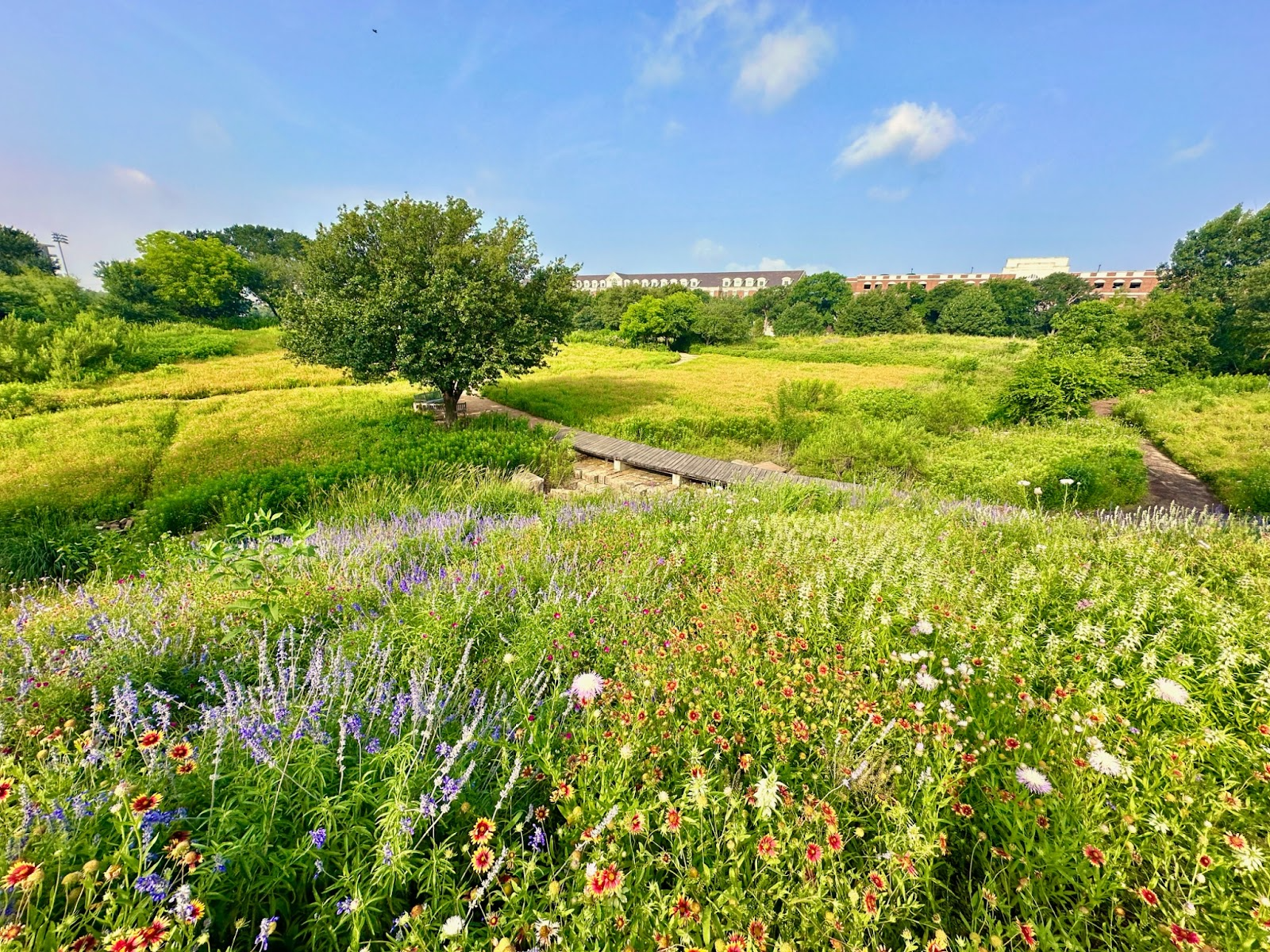
A Blackland Collaborative prairie restoration project restoring a16 acre tallgrass prairie at the Bush Presidential Center in Dallas. (Photo credit: John Hart Asher)
The concept of pocket prairies is defined as miniature prairies, oftentimes smaller than an acre, planted with native grasses and flowers to mimic what originally existed on a specific plot of land. The idea evolved from a larger scale effort that originated in Texas to aid ranchers with the restoration of native tall grass prairies.
The Blackland Collaborative, a private entity focused on ecological restoration, has played an important role in some of these projects. The firm’s involvement in ranchland and other prairie restoration has impacted more than 90,000 acres in Texas enabling it to now focus on urban areas. It works with federal, state, local and private landowners who are looking to implement green infrastructure.
According to the Blackland Collaborative less than one percent of tallgrass prairies in Texas remain and the depletion of those flowering plants has greatly impacted indigenous wildlife. This eradication of prairies also impacts the landscape’s ability to deal with weather extremes like drought and rainwater retention. That means there’s still a lot of room for improvement.
These large-scale restoration projects are the inspiration for pocket prairies that have grown in popularity among gardeners like McDowell who are looking for something more to contribute to their landscape and the ecosystem beyond just a pretty yard.
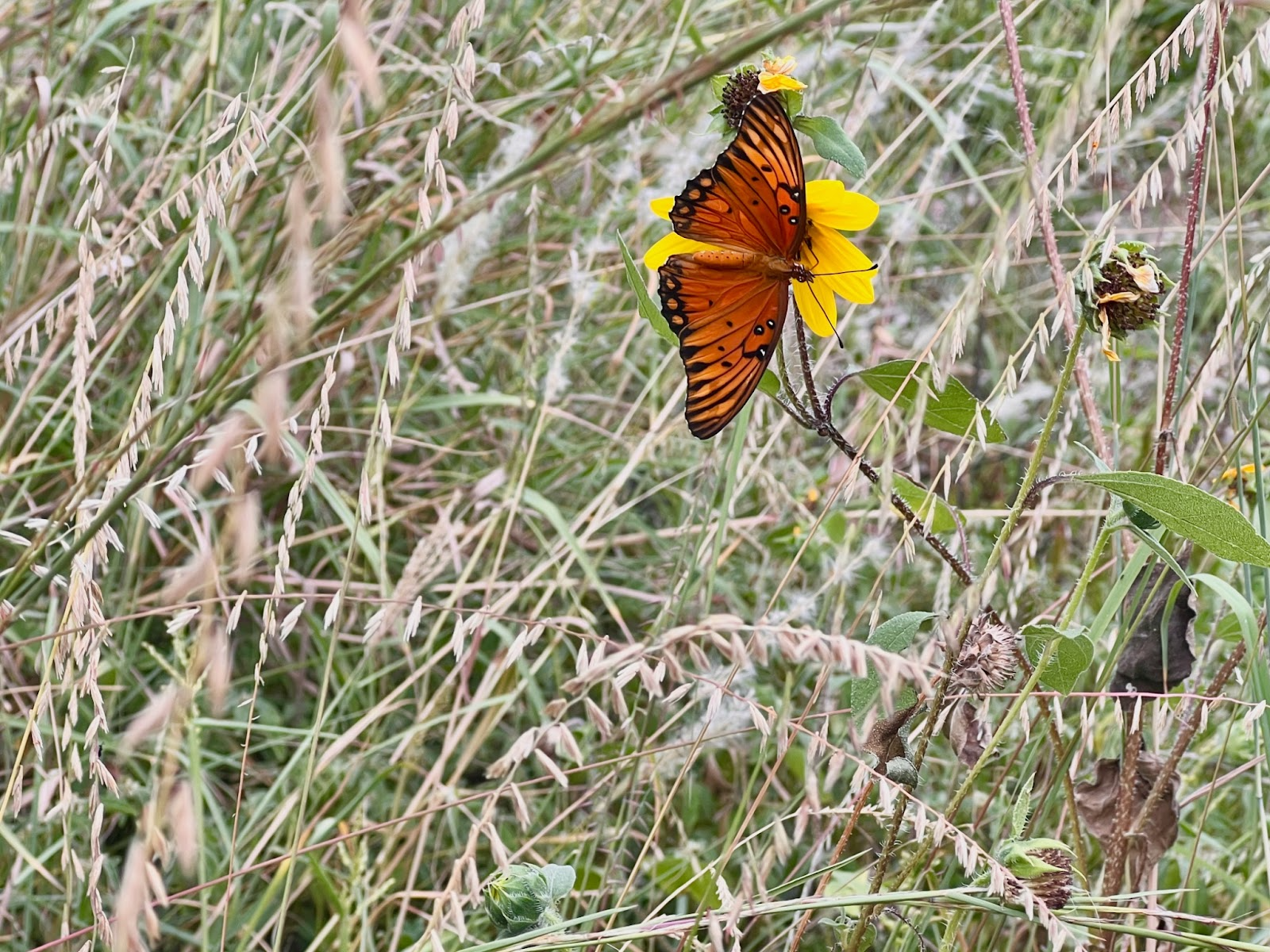
Wildlife returns when prairies are restored no matter what the size. (Photo credit: John Hart Asher)
Pocket Prairie Purpose
Creating and caring for a pocket prairie involves more than just an altruistic intention.Restoring these small plots of land to their original state requires replacing the plants and soil that once thrived there natively as historic climax plant communities.
“The key is the ecology of plant communities and the relationship between these plants, the soils and other living organisms,” said John Hart Asher, Principal at Blackland Collaborative in Austin, Texas. “It's one thing to put natives back, but another thing to put back a working community that has an impact on ecosystem services. Things like cleaning air, cleaning water, sequestering carbon, mitigating heat, island impact, creating habitat, and having a massive beneficial impact on human health.”
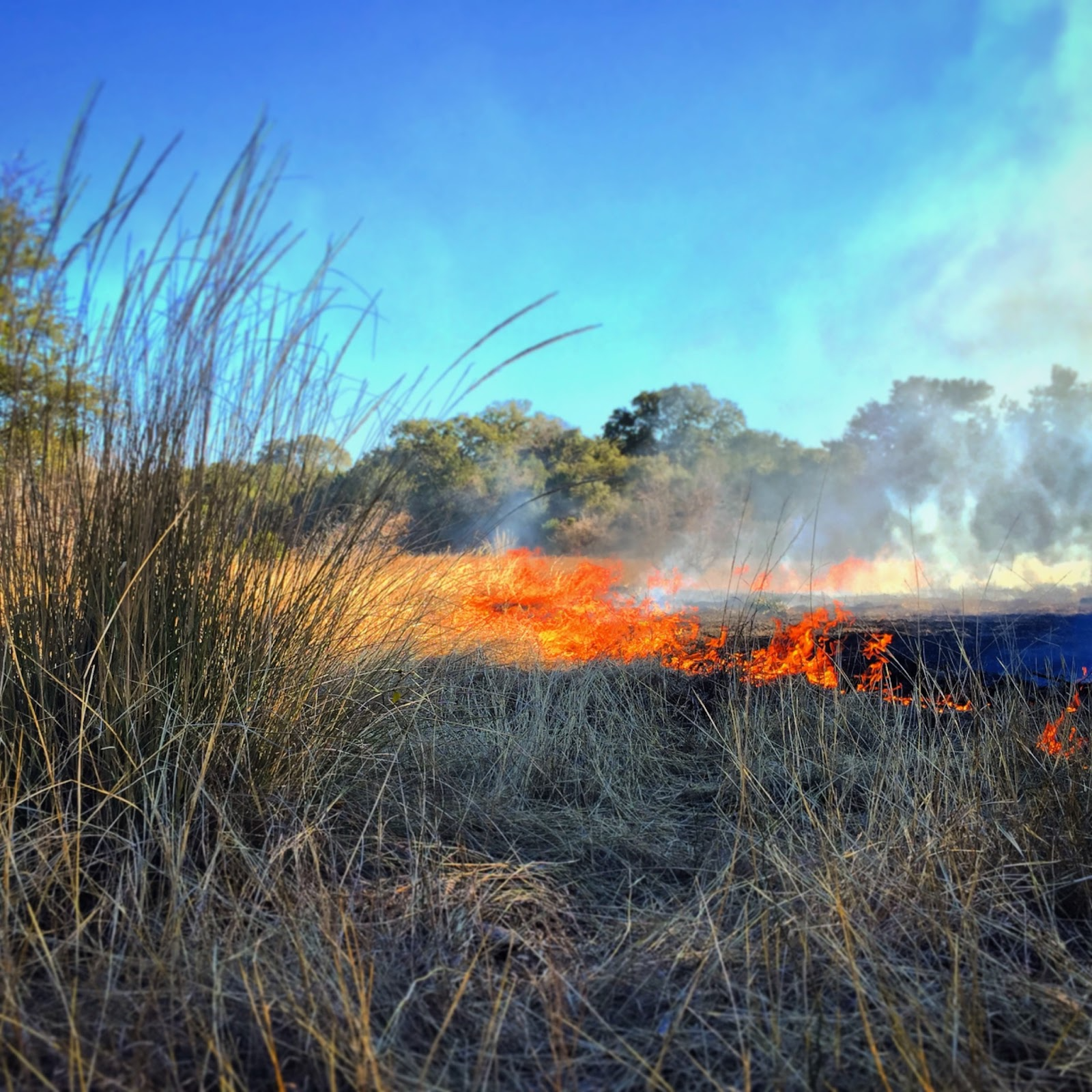
A prescribed fire burns in a prairie in Texas which helps to turn over the landscape. (Photo: John Hart Asher)
Natural prairie systems all require specific common elements to sustain them. They require disturbance events like wildfires which are important for turning over the landscape and they require high intensity, low frequency grazing to recycle nutrients which originally occurred with elk and bison. Another commonality is that they contain water-wise plants that can evolve in response to drought. This enables prairie systems to thrive no matter what Mother Nature delivers.
When those natural disturbances ceased over time with human control of wildfires and the depletion of bison, so too did the prairies and all that they provided for naturally like insects and wildlife. Since pocket prairies mimic these natural prairies, gardeners must replicate these natural disturbance events for them to succeed.
“With pocket prairies, you're putting that grassland or that herbaceous community back and then you have to be the bison. So it's not just about putting it in there, you have to be that disturbance event and if you don't, you're going to have woody encroachment. Trees are going to pop up and it's going to become just a thicket of stuff,” said Asher. “The short of it is you're trying to return that biodiverse, herbaceous community back into your little slice of heaven.”
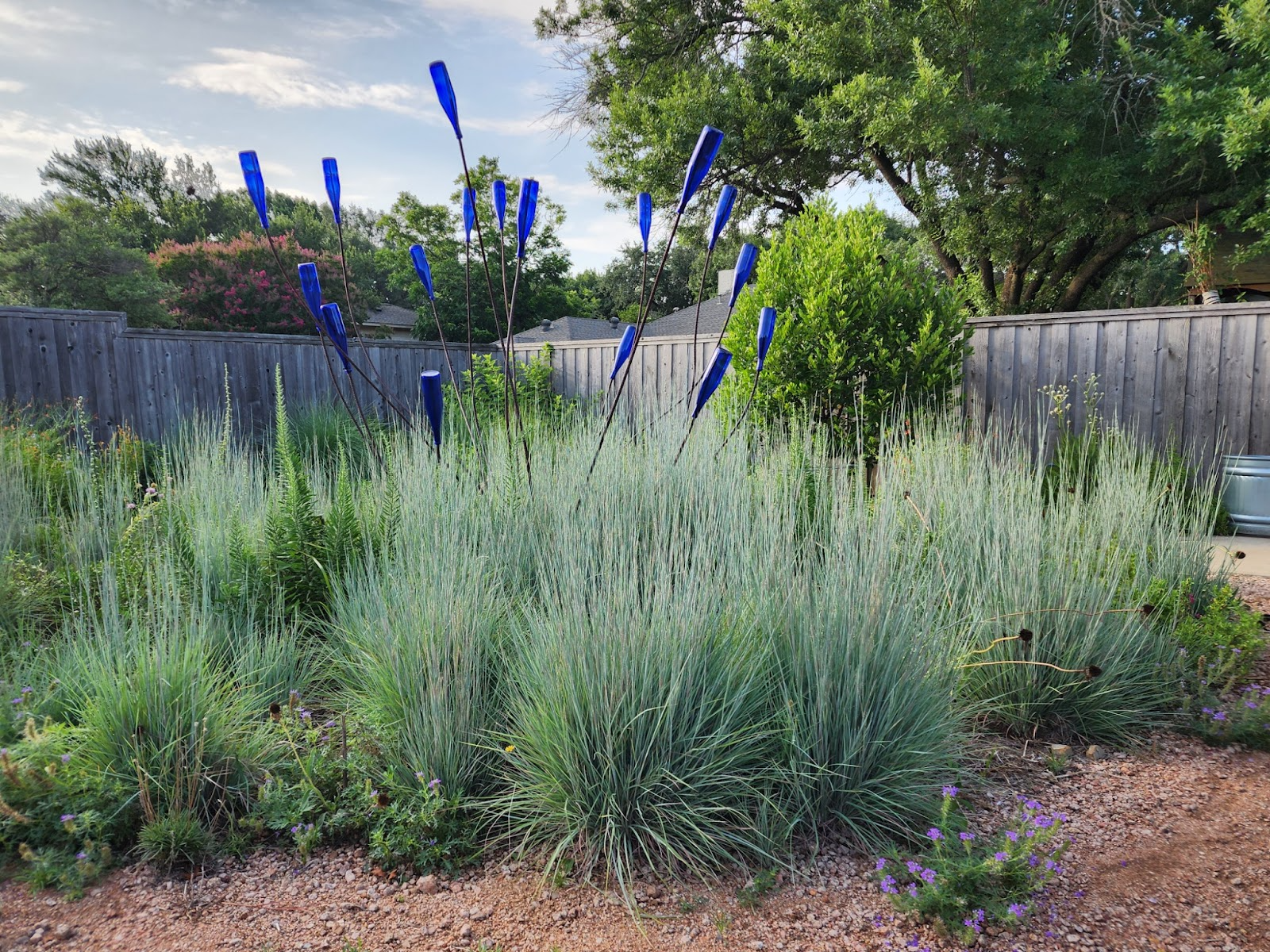
Michael McDowel’s pocket prairie landscape using a combination of grasses and wildflowers. (Photo credit: Michael McDowell)
Once pocket prairies take hold, they are easy to maintain since the native species within them can withstand the local environmental elements.
“The native prairie plants require little to no additional water once they are established. They can survive drought years and municipal watering restrictions because they can go dormant during dry summer months,” said McDowell. “The prairie garden does not need a weekly mow and blow by noisy polluting lawn equipment.”
What they do require is careful consideration of plant selection from the onset and decisions about pesticides. McDowell avoids using pesticides because some plants like native milkweeds and wooly pipevine provide food for the caterpillars of monarch and pipevine swallowtail butterflies.
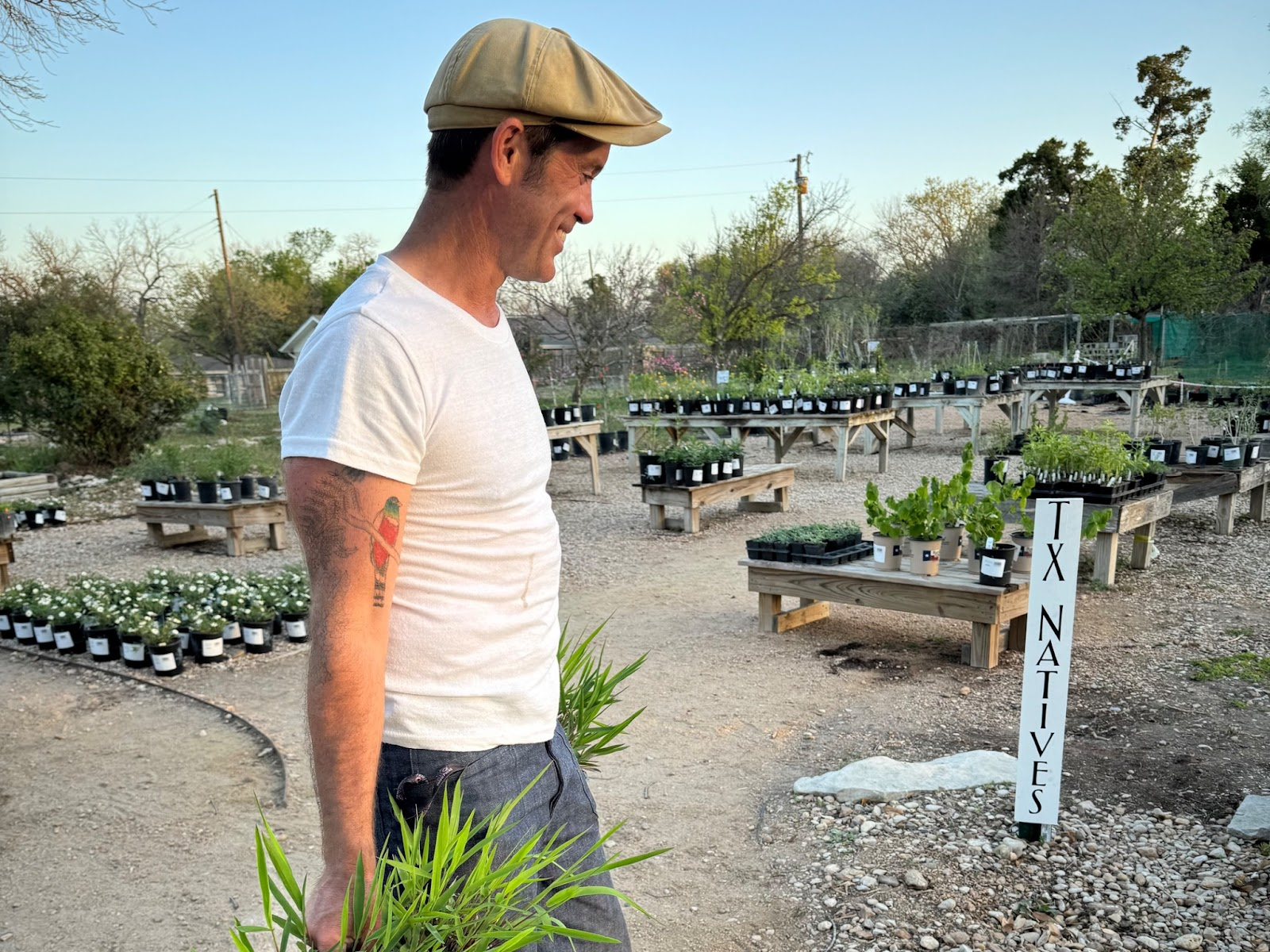
William Glenn, Owner Greensleeves Nursery works on his section of available native Texas plants. (Photo credit: Sherry Marie Koorie)
A Popular ConceptSince pocket prairies can be developed on any space of land from a suburban yard to an urban planter on a condominium balcony, their popularity has increased along with more environmentally conscious mindsets when it comes to land.
“Pocket Prairies, which I also have called "mini meadows" in the past, are gaining in popularity out here in Central Texas. In Austin, for example, the lots have become smaller and smaller, while the concrete and asphalt have subsumed the once-mighty prairies of the region,” said William “Willy” Glenn, Owner Greensleeves Nursery & Greensleeves Grower Supplies. “The concern over loss of habitat, loss of natural places has given rise to the awareness to ‘do what you can’ to help heal the land.”
Though prairie restoration on all scales has experienced a big push in Texas, these can be replicated almost anywhere utilizing native grasses and flowers that fit the biomes and ecoregions of specific locations.
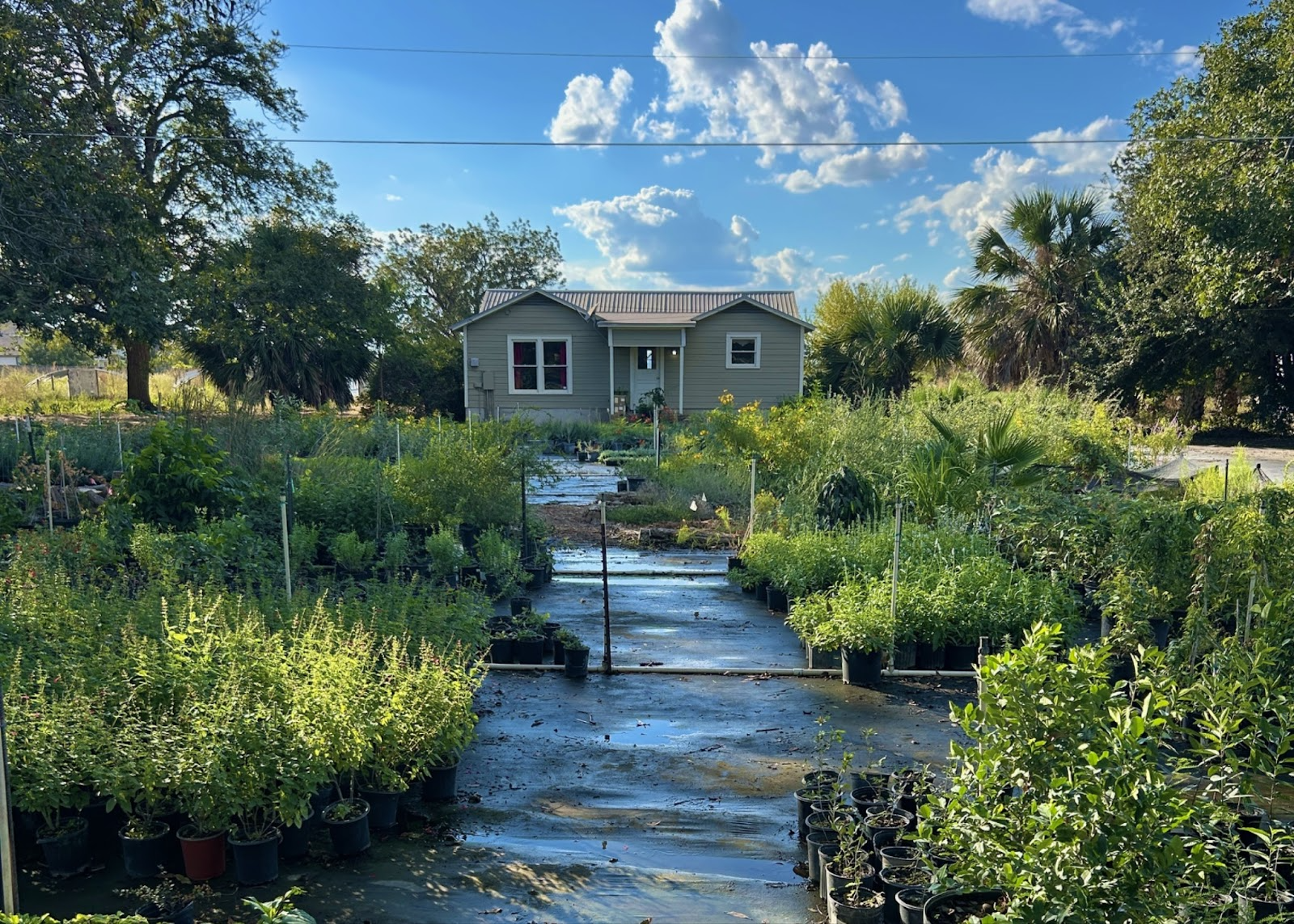
Greensleeves Grower Supplies specializes in growing prairie plants and endemic species. (Photo credit: Teresa May Nichta)
Greensleeves Nursery in Austin specializes in prairie plants and endemic species which are grown at its facilities as starter plants.
Glenn says customers oftentimes have varying motivations for wanting to build small prairies when they come to the nursery.
“It can run the gamut of someone who is a wildlife biologist and knowledgeable about prairies and grasses and we cater to them, but we also see the average person come in who is tired of watering their lawn,” said Glenn.
Regardless of motivation, Glenn recommends that anyone wanting to build a pocket prairie start simple with a hearty plant base that offers a mix of stability and aesthetics.
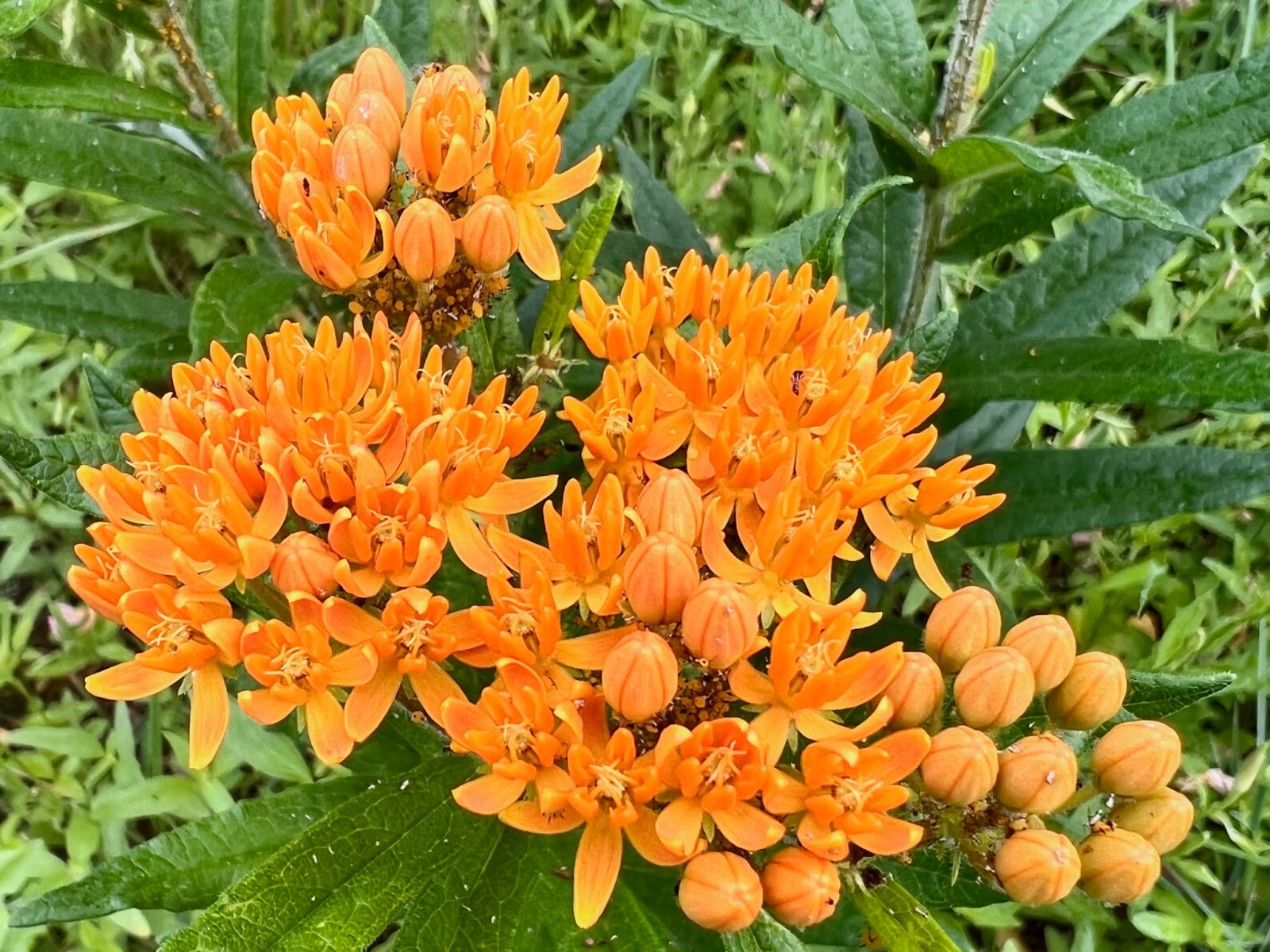
Butterfly weed is a native plant to Texas and a popular option for including in pocket prairies. (Photo credit: John Hart Asher)
Plant decisions are ultimately based on exposure to soil, the regional climate and ecosystem where they are being developed.
“I tell my customers to start with 10 four-inch plants, then when you get your wildflower seeds you have the base of plants that keep things together and more established,” said Glenn. “If they are into monarchs, I suggest milkweeds but a couple different kinds to ensure a succession of blooms and growth cycle. We also need grasses for birds and bees like a yellow passionflower that feeds a species of native bee here.” Greater availability of native plant seeds and mixes enables gardeners to consciously focus more on sustainability over aesthetics and implement a native prairie on any plot of land.
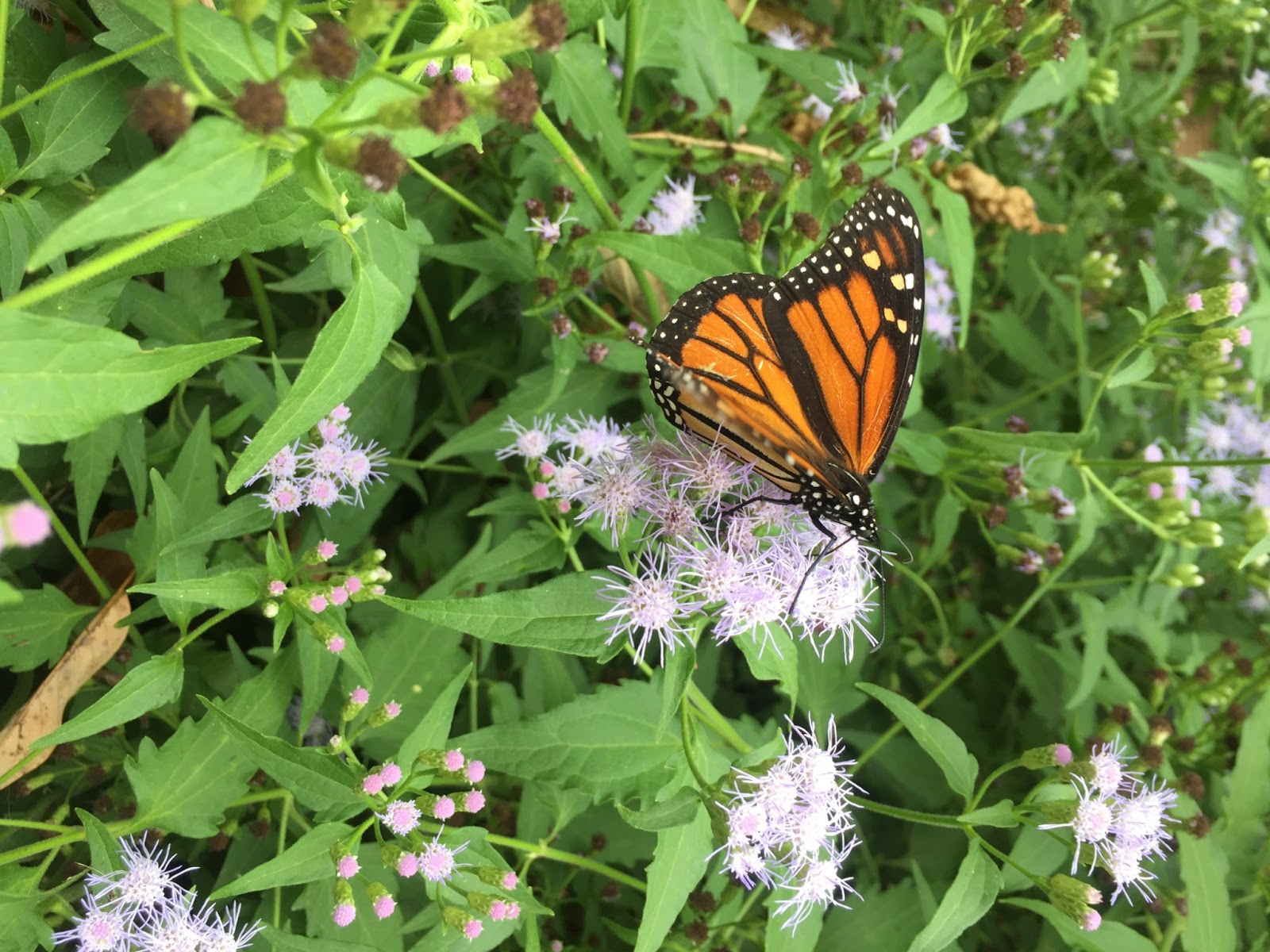
Giant blue mistflower (Chromolaena odorata) at the Greensleeves Nursery. (Photo credit: William C. Glenn)
Building a Pocket Prairie
Pocket prairies are hearty once they are established but they do require careful implementation. “I encourage interested people to start with a simple, achievable plan to get rolling with a new pocket prairie. However large you would ultimately like your pocket prairie to be, cut that square footage in half—right out of the gate, so that you can focus on establishing your new micro-environment well, rather than be overwhelmed with the project,” said Glenn.
The first step is removing weeds and prepping the soil. Developing a solid soil base and understanding what type of soil you are working with is the most critical step and often the most overlooked.
“What good is it to bring in plants and seeds if the first storm carries all of your hard work away,” said Glenn.
A simple "jar test" can determine your soil’s texture. There are many online resources for how to conduct one. Another helpful resource is the USDA’s Web Soil Survey to determine the historic climax plant communities and the type of soil that exists on your land.
From there Glenn recommends using a quality compost to create at least a six-inch base then adding at least two species of native short grasses in sunny areas, or two species of native sedges in shaded areas. These options provide above-ground blades to act as a filter when water and wind move across the surface and fibrous root systems to anchor the soil. He suggests utilizing small transplants from a nursery for these to help stabilize the soil quickly.
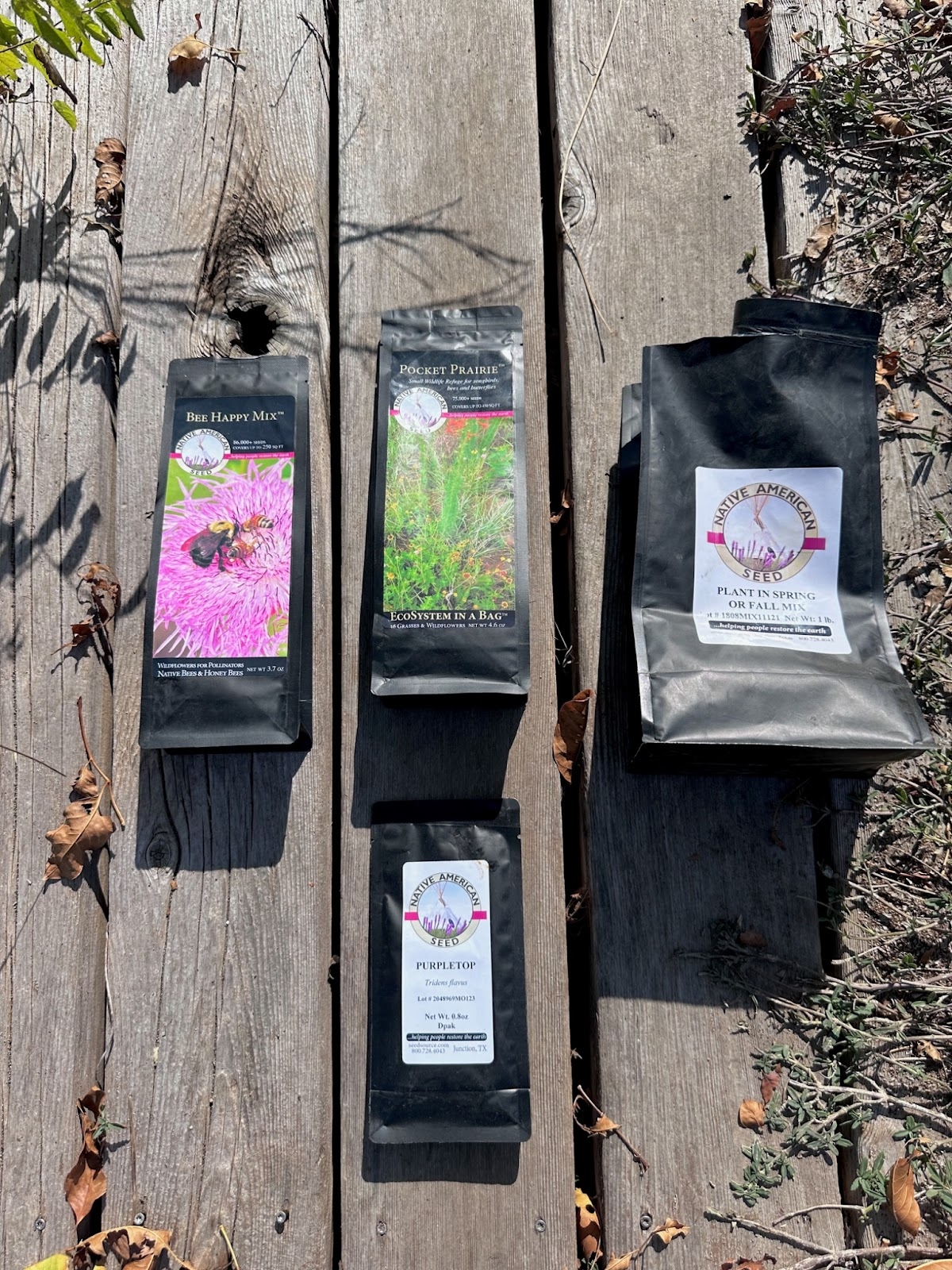
Examples of purchased biodiversity bump seed mix. (Photo credit: John Hart Asher)
Next, comes the strategic planting of grassy anchors to the meadow by planting seeds for native species. “When seeding, the more roughed up the soil, the better. I usually dust the surface of the soil with fine compost, but before and after sprinkling a diverse blend of native plants appropriate for the light exposure and to attract pollinators,” said Glenn.
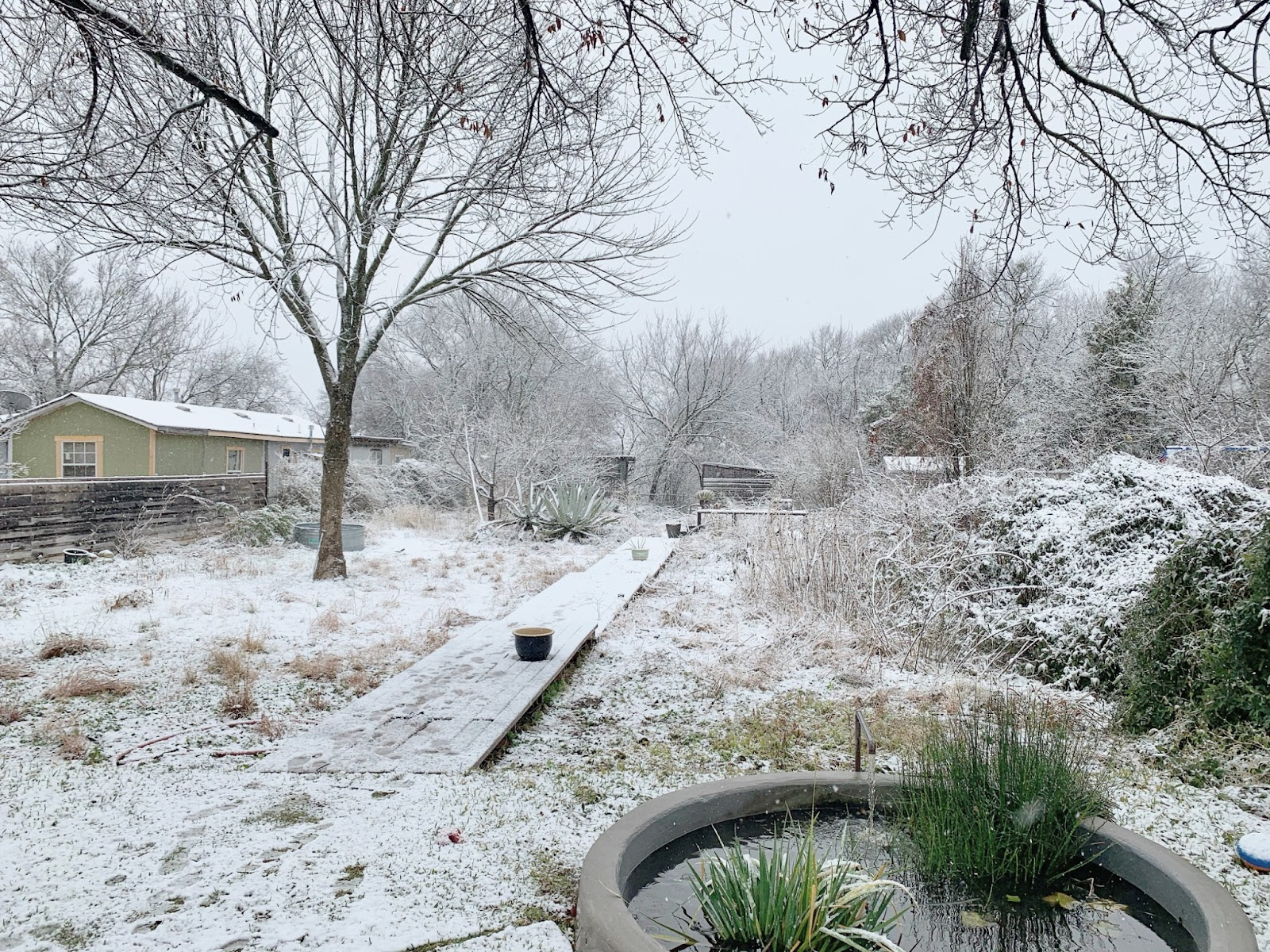
A pocket prairie in winter. (Photo credit: John Hart Asher)
Prairie maintenance will depend on each situation but generally plants that have frozen over in winter can be left to decay naturally to cycle organic material back into the soil. As the pocket prairie matures, some plants will cycle out as grassy species flourish and spread. Then, it’s watch and wait.
“Over time, you'll see native critters of all kinds creating a vibrant, dynamic new mini ecosystem. Once this begins, a cycle of life will unfold that will keep your rapt attention. It is the reward for having done your part to heal the environment,” said Glenn.
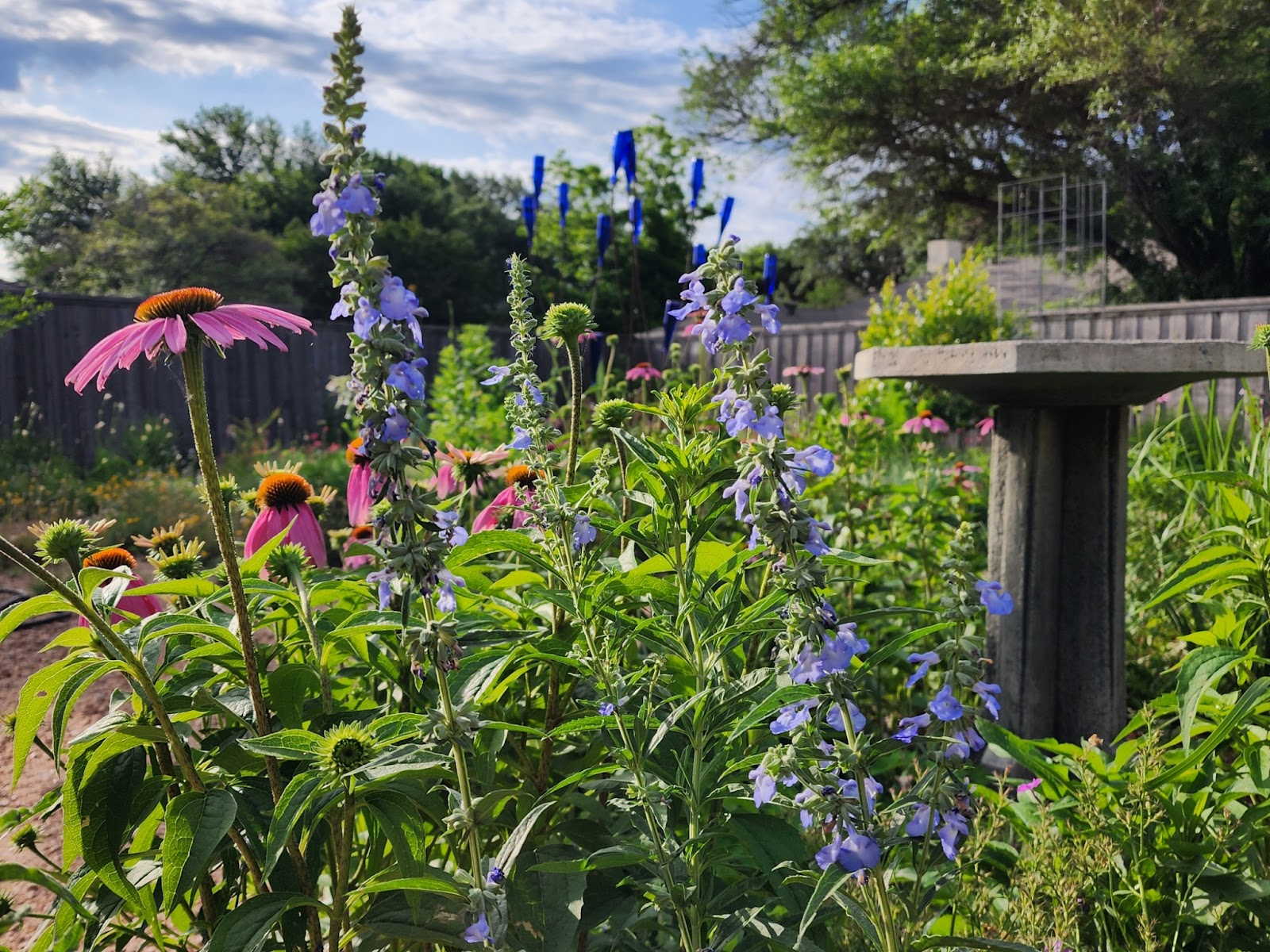
A colorful display of wildflowers in Michael McDowell’s pocket prairie. (Photo credit: Michael McDowell)
Mutual Benefits
Pocket prairies in both rural and urban areas are not just about restoring what was on the land natively and the trickle-down ecological impact, but they offer the humans caring for them health benefits too by reconnecting with nature. Some gardeners are motivated to create pocket prairies because of an interest in butterflies and for others it’s about seeing a resurgence in grassland birds that disappeared with the prairies. “Conservation only works if people know and love what they're trying to protect,” said Asher.
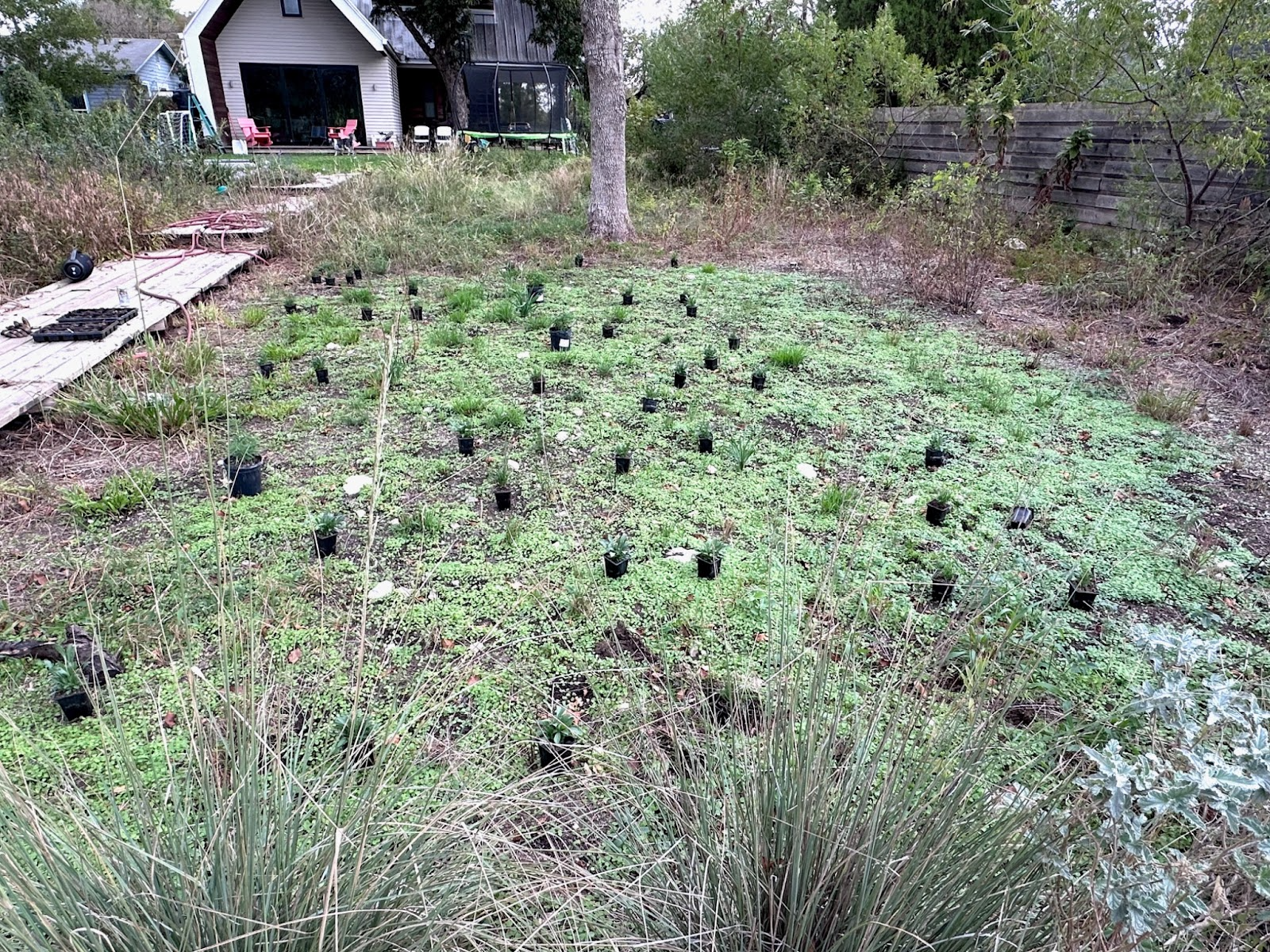
A pocket prairie at John Hart Asher’s home with bluestem plugs that eventually attracted wildlife not seen there previously. (Photo credit: John Hart Asher)
Asher remembers seeing lightning bugs in his yard as a child but there were none when he bought his urban property as an adult. Within a few years of planting a pocket prairie, nature returned. “One night I walked out and there was this eruption of light and these lighting
bugs were just pouring out, and I was like, wow, I haven't ever seen this, what's going on. I went all around my neighborhood, and it was only coming from my yard,” said Asher. “Once you have that experience you want it more and more because you're sort of pulling the curtains back and exposing the universe.”
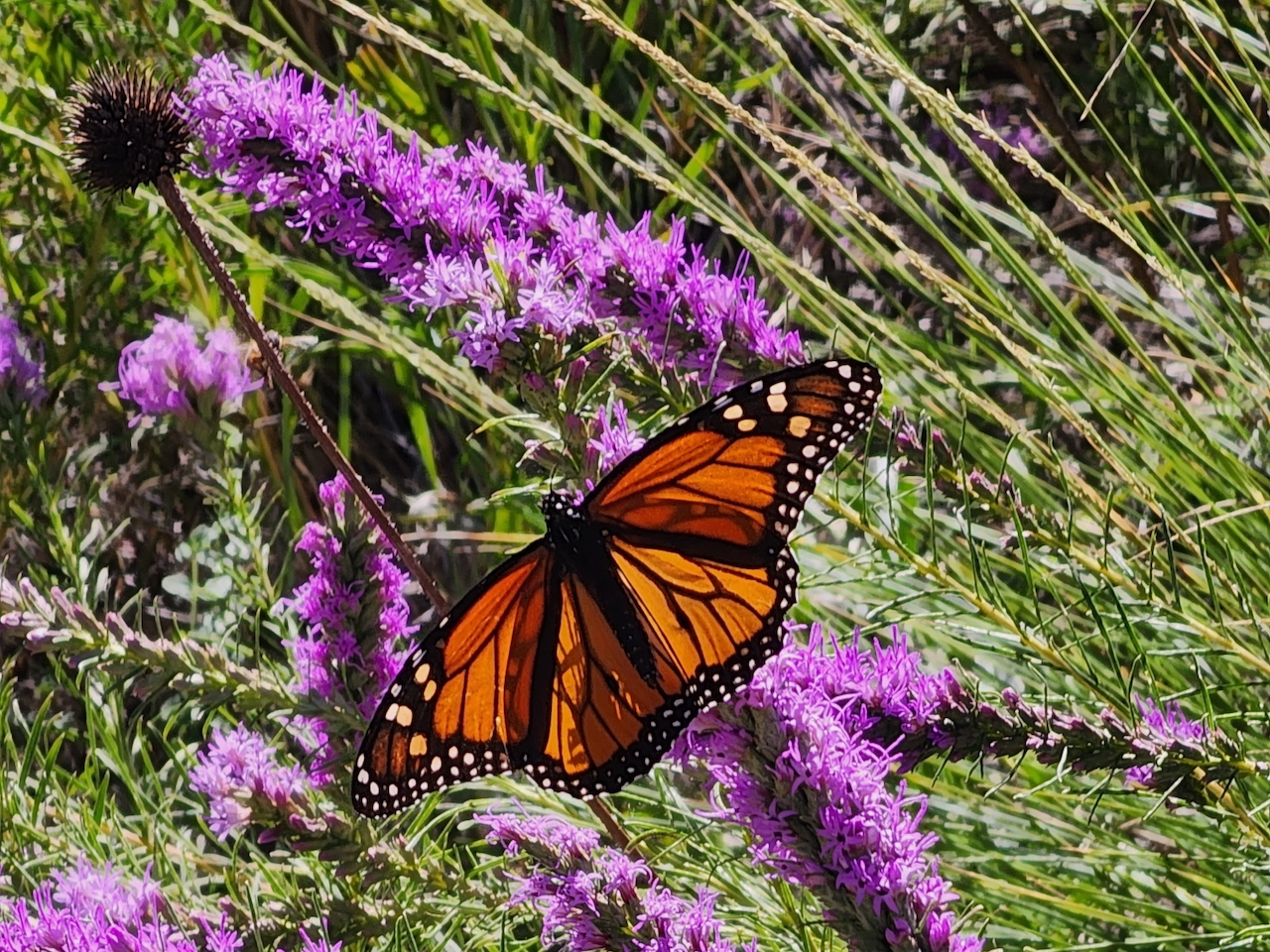
A monarch butterfly makes a stop at Michael McDowell’s pocket prairie to rest during migration. (Photo credit: Michael McDowell)
For gardeners like McDowell, childhood nostalgia is also a driver in his desire to reconnect with nature in this way.“My goals were to grow plants that benefited wildlife and could handle our weather extremes and assemble them in a manner that is pleasing to the eye. I eventually gravitated toward more plants that were native to my immediate area. These were the prairie plants that I would see while exploring fields as a child,” said McDowell.
There’s also a sense of pride in watching a prairie evolve. The signature plant in McDowell’s garden is the Texas Blazing Star (Liatris mucronate) that only blooms for about three weeks from the end of September into the first part of October.
“The blooming period usually coincides with the migration of monarch butterflies as they journey from as far away as Canada to their winter roost in Mexico,” said McDowell. “The migration path of the monarchs takes them directly through Texas and they stop along the way to feed on the nectar of flowers. Texas Blazing Star is native to my immediate area and is a plant that fed migrating monarchs over the ages. I think it is amazing that the monarchs can find the Texas Blazing Star in my prairie garden as they fly over the area at 1,200 feet.”
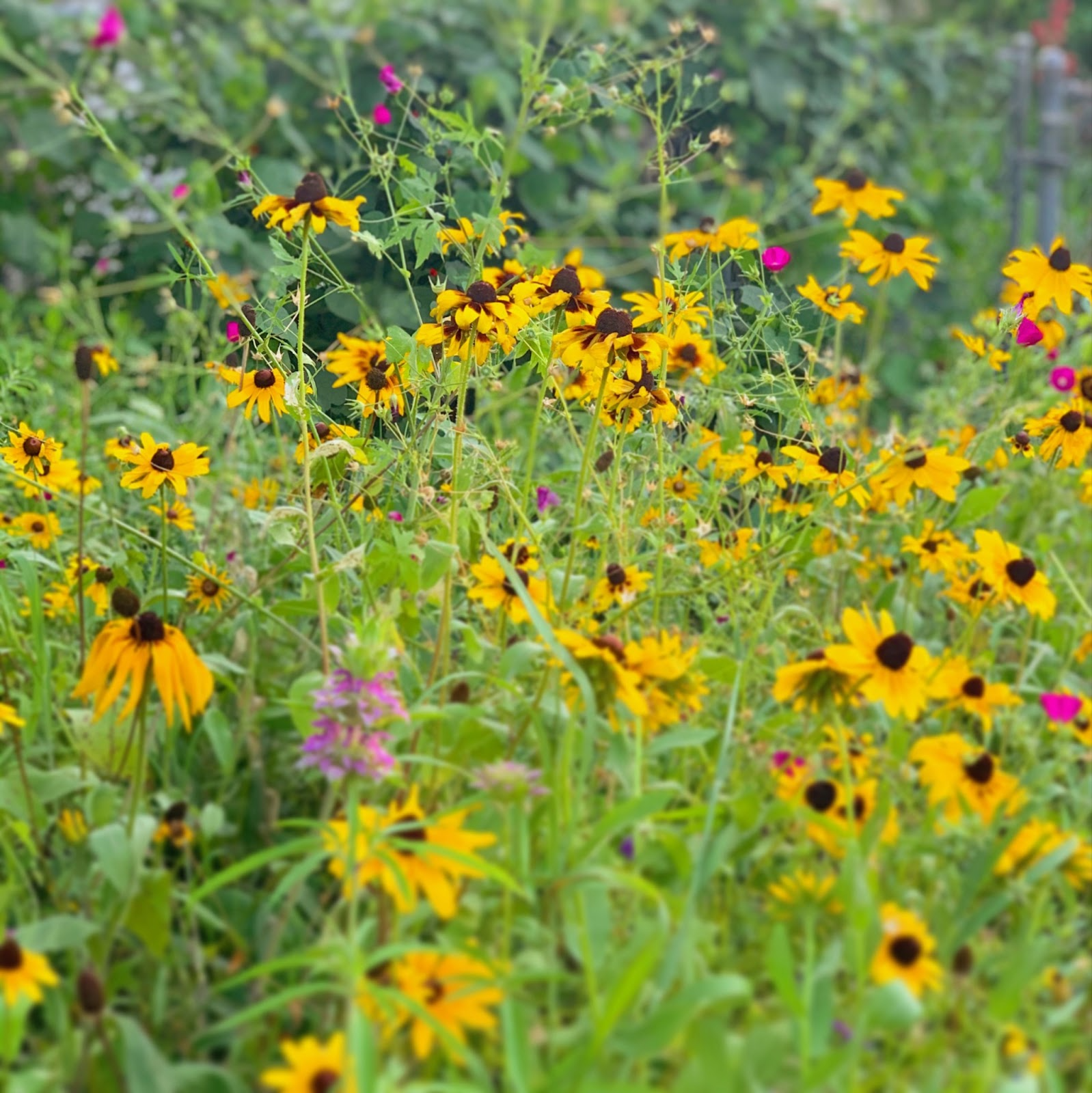
A meadow of black-eyed susan wildflowers in a pocket prairie. (Photo credit: John Hart Asher)
This cause-and-effect impact of pocket prairies is powerful for both the land and the people who live on it. When gardeners like McDowell see the full-circle effect of insects and wildlife that were never there before suddenly arriving, his pride at having a hand in nature’s restoration is what inspires him to be an advocate through action.
What starts in one yard or on one balcony can become two and twelve and even a neighborhood with native species making a collective impact of individual prairies as significant as a large-scale restoration.
